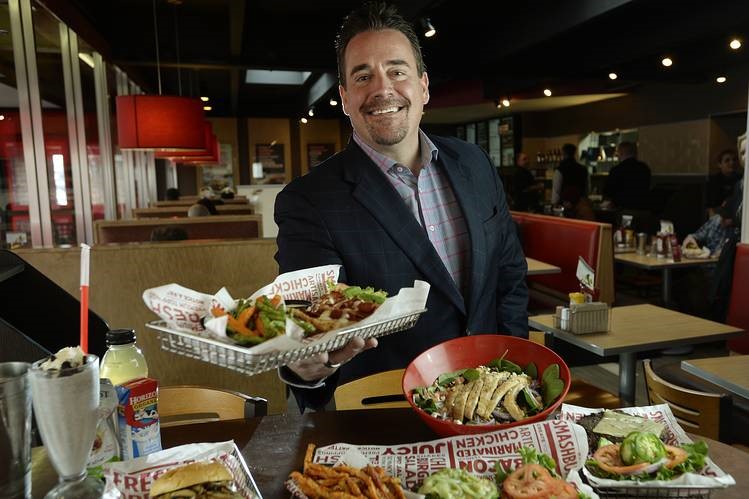
Archive for March, 2018
Your Last Five Years: How Exitable is My Company?
You, as a business owner, must answer five critical questions once you reach five years before your desired exit. These five questions define your exit goals and help shape the plan for how you will achieve those goals. As stated in previous articles in this series, there’s no way to sugar-coat this—answering these five questions must happen as you enter Your Last Five Years. Without clear answers, you will not know the steps needed for your exit planning, and you potentially run out of time to maximize your exit success.
This article is the sixth installment of a seven-part series on what business owners need to do once they reach the Last Five Years before exit.
The five critical questions are:
- What is My Likely Exit Strategy?
- How Much Do I Need to Net From My Exit?
- What Do I Want My Legacy to Be?
- What Do I Want To Do In Life After Exit?
- How Exitable is My Company?
NOTE: Click the article links above to review other installments of the ‘Your Last Five Years’ series
It’s not hard to know if a company is profitable—it’s right there, in black and white, in the financial statements. But what does it mean to say a company is exitable? And, just because a company is profitable, does that mean it is exitable?
Admittedly, I made up the word “exitable.” But if the word was real, what would it mean? Well, an exitable company would be one from which the business owner or owners can actually exit. That would mean the company has value—value that is convertible into personal wealth and financial independence for the owner. Exitable would also mean that the company can survive the exit process, without disrupting operations and critical relationships. The bottom line is an exitable company is one that can fulfill the owner’s business and personal goals at exit.
With that definition in hand, let’s now ask—if a company is profitable, does that mean it is exitable? This question is centric because most owners go to work every day challenging themselves and their teams to “grow” the business. “Growth” is primarily measured by revenue and profits. On the other hand, if growing profits does not necessarily make a company more exitable, that would be very important to know.
Unfortunately, it turns out profitability and exitability are not the same. And sometimes owners only learn very late—meaning shortly before they wish to exit, at which point their exit success is undermined, or perhaps even blocked outright.
There are a surprising number of ways that businesses can grow and operate profitably, without necessarily being exitable. Here are four common situations where this can occur.
1. Owner Dependency
The first common limitation on exitability is owner dependency. If your business is dependent on you, or any other owners, to operate and grow profitably, this typically limits exitability. The company’s value cannot walk out the door when you do. It’s ironic too because your company probably would not be what it is today if you had not worked as hard as you have up to now, perhaps over many years. It’s great to be good at what you do, but if your company is losing an essential employee when you exit, that undermines exitability. It’s not enough either just to say that the company could manage to survive without you. It has to be able to thrive without you. Buyers want to know that the business’ profits will not slow down nor go away when you do.
2. Customer Concentration
The second common limitation on exitability is customer concentration. This matter may surprise you because customer concentration is usually a byproduct of a job well done. Your company may have one or a few customers that are served well, and they’ve responded by sending more and more business your way. But then, one day, you look around, and 20%, 30%, 50%, or more of your revenue and profits comes from these few customers. These customers might be generating a lot of profits, but customer concentration usually limits exitability. If you intend to sell your company one day, your future buyers likely won’t have longstanding relationships with these customers, creating risk for them. Buyers often pay less for companies with customer concentration or pass on purchasing that company altogether. Customer concentration thus becomes a serious limitation on exitability, no matter how profitable those customers may be.
3. Co-Owner Goal Misalignment
The third way many companies experience limited exitability is if they have co-owners who are not in alignment with one another. We did a research study some years ago, and it revealed that 7 out of 10 small to medium sized privately-owned companies have ownership shared among two or more co-owners. We often see co-owners who are in strong alignment with one another for years and sometimes even decades while they are working together to grow the business because they share one clear priority, which is to increase revenues and profits. The problem arises when one or more of those co-owners get closer to exit because then the goals often change, and the co-owners find themselves no longer in alignment. For example, one co-owner may want to sell now, while another wants to wait. Or, one co-owner may decide to sell for lower price, while another wants to keep growing the company and hold out for a higher price. Whatever the situation, when the goals change, the co-owner alignment changes, and often the co-owners don’t even realize it’s happening until close to exit, at which point it can ultimately undermine a company’s exitability. No matter how profitable your company may be, if the co-owners are not in alignment, exitability will suffer.
4. Unclear Plan for the Future
The fourth way companies experience reduced exitability, regardless of profitability, occurs if the company lacks a clear, compelling plan for future growth. For a company to be highly exitable, it must offer a buyer or successor a credible and compelling vision for how that company will grow going forward, after your exit. How profitable the company has been up to this point is nice, but what the company is expected to do in the future drives value and exitability.
Many profitable companies don’t have the systems and habits that help create this compelling plan for future growth. For example, the company leadership team might not do sound strategic planning, or perhaps they do not diligently measure monthly or quarterly performance against financial budgets and operational benchmarks. Without experience doing effective strategic planning, and without a clear track record of being accountable for achieving business goals, it may be unclear to the future buyer or successor whether this company can sustain its future growth after your exit. This shortage undermines exitability, even if the profitability has historically been good.
To learn more about the factors and conditions within practically any business that will increase (or decrease) its value at sale, we invite you to view our complimentary webinar: How Do I Maximize the Value of My Company?
In the next article in this series, we will wrap up this series on Your Last Five Years.
If you have questions about your situation, Call 772-210-4499 or email Tim to schedule a confidential, complimentary consultation.
To Be Successful, Make Your Own Luck
On St. Patrick’s Day everyone wants the Luck of the Irish and to find the Pot of Gold. This article from the Wall Street Journal – March 1st provides some clues to help you have both.
Stories about getting lucky are common in the business world, but attributing success to random chance is misleading. Simple rules to create luck for yourself.
To Be Successful, Make Your Own Luck
By
Janice Kaplan and Barnaby Marsh
March 1, 2018 11:21 a.m. ET WSJ
When Scott Crane became president of the fast-casual restaurant chain Smashburger in 2007, he wanted “to put better burgers into people’s lives,” he told us. It was a smart concept, but according to Mr. Crane, there was another key factor: luck.
The recession of 2008 hit shortly after he took over, and Americans were looking for more value when they dined out. Also, real-estate prices had gone down, so Smashburger was able to expand in a way that wouldn’t have been affordable before. By the time Mr. Crane left the company in 2016, Smashburger had 330 restaurants in seven countries.
Such stories are common in the business world. An executive humbly claims that he was simply in the right place at the right time, took advantage of circumstances and—bam!—became a huge success. But attributing success to random chance is misleading. If you believe that luck will just fall from the sky, you will probably never get lucky.
Luck occurs at the intersection of random chance, talent and hard work. There may not be much you can do about the first part of that equation, but there’s a lot you can do about the other two. People who have a talent for making luck for themselves grab the unexpected opportunities that come along.
The good news is that there’s plenty of luck to go around if you know how to look for it. Some simple rules can help.

Scott Crane of Smashburger (in 2014) says luck was a key factor in his success. PHOTO:CYRUS MCCRIMMON/DENVER POST/GETTY IMAGES
Pay attention. Researchers who study attention and perception distinguish between narrow focus (seeing specifics) and open focus (observing the wider scene). The most important talent anyone who seems lucky possesses is the ability to pay attention on many levels and to notice opportunities.
The psychiatrist, entrepreneur and philanthropist Henry Jarecki made his first fortune in the late 1960s when 25% of the currency in circulation in the U.S. was still backed by silver. The bills said right on them: “Silver payable to the bearer on demand.”
Dr. Jarecki realized that the silver could be worth more than the dollars—so he collected millions of certificates by paying people $1.10 or more for their $1 bills. Converting them to silver and then selling them as silver futures was a complicated, multistep process, but once he got bank financing behind him, he made more than $100 million from the exchanges.
“I can’t figure out why I was one of the very few who figured out a method for transforming the certificates into real silver,” Dr. Jarecki said. “We all had the same bills in our pockets.”
Get off the standard path. Mathematicians who study game theory have concluded that, in highly competitive conditions, the best move is often to be unpredictable. Lucky people are often the outliers who find a path that others missed.
Warner Bros. executive Mike Darnell made his name in the 1990s by championing offbeat specials at Fox such as “Joe Millionaire” and “Temptation Island,” projects that essentially launched reality-TV. The genre was so scorned by the rest of the industry that, when music mogul Simon Fuller came to Hollywood pitching a reality show, Mr. Darnell was one of the few network executives willing to meet with him. Ultimately, he bought the show, “American Idol,” which became one of the most successful programs in television history.
“I was looking for a different lane that would be my own and where I didn’t have to compete with everyone,” he told us. Working in a business where everyone copies each other, he survived and made his own luck by being different.
Change the odds. Random events have an impact on every life and business, but Caltech physicist Leonard Mlodinow told us that randomness is just part of the story. With so many unknown variables knocking around, one of the best ways to improve your luck is to keep taking chances. “You have to keep trying and accepting failure, because the more at-bats you have, the more likely you are to get a hit, no matter what your skill,” he said.
A young entrepreneur named Alex Abelin left his job at Google a few years ago to start a company connecting web designers with the companies who needed them. As a backup, Mr. Abelin also became an adviser to another startup called Liquid WiFi. “I always knew that if one didn’t work, I had an opportunity with the other,” he said.
His own company did well for a few years and got a lot of attention, but eventually he ran out of funding, closed it down and moved full-time to Liquid WiFi. Shortly after, it was purchased by Verizon for a hefty sum. Two chances at bat meant that he didn’t strike out.

Author Lee Child suggests seeing bad luck as an opportunity. PHOTO: JOEL RYAN/INVISION/ASSOCIATED PRESS
Think yourself lucky. Psychologist Martin Seligman of the University of Pennsylvania told us that if he were looking for a lucky person, “the number one ingredient that I’d select for would be optimism.” Early in his career, Dr. Seligman did groundbreaking experiments on learned helplessness, showing that animals put in stressful situations beyond their control eventually stop trying to escape. People also have a tendency to give up and complain when they think they’re victims of bad luck.
“Believing that you have some control over what happens fuels trying,” Dr. Seligman said. “If there’s a potentially good event for me, am I going to seize the opportunity and follow up, or am I going to be passive?”
Difficult moments that seem like bad luck can become part of a happier picture. Best-selling author Lee Child suggests seeing bad luck as a chance that has come your way. He started writing the Jack Reacher thrillers only after he was fired from a television job in the U.K. that he loved. He was angry and frustrated and felt betrayed, but he channeled it all into finding a new opportunity.
When you’re in the midst of a difficult time, you may not immediately see that your bad luck can have a bright side. But a tough situation may shake you out of your complacency and inspire you to take risks that can lead to unexpected good luck.
Most of us act on only a fraction of the luck-making possibilities around us. If you want to become lucky, look for the positive side of any situation. Choose the favorable future you want and then live as if it had already occurred. It’s not mystical—it’s just a way of putting together all the ingredients to make luck happen.
—This essay is adapted from Ms. Kaplan and Mr. Marsh’s new book, “How Luck Happens: Using the Science of Luck to Transform Work, Love and Life,” which will be published next week by Dutton.
Your Last Five Years: What Do I Want to Do in Life After Exit?
Undoubtedly, you’ve noticed that in the U.S. we define ourselves strongly around our occupations. At social gatherings, when two people meet for the first time, usually the second question (the first being “What’s your name?”) is “What do you do for a living?” For most of us, our occupations are a core element of our identity and sense of self-worth. For this reason, when faced with the question of what to do in life after the business exit, many owners understandably feel some level of anxiety and concern. That’s why figuring out your plans for life after exit is a critical issue.
The five questions are:
- What is My Likely Exit Strategy?
- How Much Do I Need to Net From My Exit?
- What Do I Want My Legacy to Be?
- What Do I Want To Do In Life After Exit?
- How Exitable is My Company?
Question 4: What Do I Want To Do in Life After Exit?
Undoubtedly, you’ve noticed that in the U.S. we define ourselves strongly around our occupations. At social gatherings, when two people meet for the first time, usually the second question (the first being “What’s your name?”) is “What do you do for a living?” For most of us, our occupations are a core element of our identity and sense of self-worth. For this reason, when faced with the question of what to do in life after the business exit, many owners understandably feel some level of anxiety and concern. That’s why figuring out your plans for life after exit is a critical issue.
Owners must address this question prior to their desired exit. You cannot assume that you will figure it out after you have exited. Figuring out your plans for life after exit often takes years. Waking up every day without something meaningful and interesting to do in life is not going to be a happy exit.
Five years before exit is when to begin exploring this issue, because answering the question takes time. If you have few to no ideas about what you might do in life after exit, you will need time to research and reflect. If you have ideas for life after exit, you will need time to test your plan. Perhaps the biggest mistake owners make with this question is that they never actually test their life after exit ideas. If you have some ideas about a new company, work on the business plan. If teaching sounds like fun, be a guest professor for a semester. If you want to open a winery, go work harvest one fall. Whatever your ideas may be, test them. Nobody has a perfect track record of predicting their next calling or hobby. You must verify that your ideas will provide you with meaningful, engaging activities on a sustained basis.
To help you get started exploring your ideas for life after exit, review this list of 101 Questions to Help Business Owners Determine What to Do in Life After Exit.
In the next article in this series, we will examine the fifth and final question you must answer when entering Your Last Five Years: “How Exitable is My Company?”
If you have questions about your situation, Call 772-210-4499 or email Tim to schedule a confidential, complimentary consultation.
Your Last Five Years: What Do I Want My Legacy to Be?
You, as a business owner, must answer five critical questions once you reach five years before your desired exit. These five questions define your exit goals and help shape the plan for how you will achieve those goals. As stated in previous articles in this series, there’s no way to sugar-coat this—answering these five questions must happen as you enter Your Last Five Years. Without clear answers, you will not know the steps needed for your exit planning, and you potentially run out of time to maximize your exit success.
The five questions are:
-
What is My Likely Exit Strategy?
-
How Much Do I Need to Net From My Exit?
-
What Do I Want My Legacy to Be?
-
What Do I Want To Do In Life After Exit?
-
How Exitable is My Company?
Question 3: “What Do I Want My Legacy to Be?”
Legacy. This single word causes business owners more emotion when they’re standing on their “one-yard line” than any other single word. Few owners would define an exit as being “successful” if somehow their exit failed to uphold strongly-held values and beliefs. Legacy is hard to define. It means different things to different people. Yet it is immensely powerful. Many owners surprise themselves by how essential legacy motives become once they get close to exit. Legacy is so powerful that it can veto price. For example, many owners are willing to accept a lower purchase price for their company if it means making sure their employees, customers, and brand are treated better by that particular buyer.
It’s imperative to determine what is important to you about legacy once you reach the five-year tipping point when there is time to plan and implement steps that will achieve your success. Waiting past then narrows your options and usually increases your stress. For example, many owners have some employees they want to thank once they exit, generally with significant bonus checks. Owners who wait to address this until shortly before exit nearly always stress with sensitive questions such as who to thank, how much to spend, and who should get more or less. Those questions are difficult to answer at any time, and even more challenging when you have dozens of other things pressing on you shortly before exit. An alternative approach is to install incentive-compensation golden handcuffs plans, created for these same employees years before your exit. Payouts earned under these plans nicely double as your exit thank-you bonuses, eliminating most to all of this last-minute stress. To hear one former client’s real-world story on this issue, watch our on-demand webinar – “The Good, the Bad, and the Unexpected”.
Figuring out your legacy wishes takes time and reflection, and must start when you reach Your Last Five Years.
To help you get started, we have created “The Three Laws of Legacy”, a video and a white paper with identical content, to give you a framework in order to determine your legacy needs.
We encourage you to either watch the thirteen minute video, or download “The Three Laws of Legacy” white paper, both are the same content. If after reviewing our material you have additional questions about your situation, Call 772-210-4499 or email Tim to schedule a confidential, complimentary consultation.
In the next article in this series, we will examine the fourth question you must answer when entering Your Last Five Years: “What do I want in life after exit?”.
Your Last Five Years: How Much Do I Need to Net from My Exit to Achieve Financial Freedom?
In Part 1 of this series on Your Last Five Years, we examined why five years is the tipping point when owners must start formally planning their exit. Click here to review that article now.
In Part 2 of this series, we looked at the five questions owners need to answer once they reach the critical five-year tipping point, and explored the first question, which is “What is My Likely Exit Strategy?” Click here to review that article now.
You, as a business owner, must answer five critical questions once you reach five years before your desired exit. These five questions define your exit goals and help shape the plan for how you will achieve those goals. As stated in previous articles in this series, there’s no way to sugar-coat this—answering these five questions must happen as you enter Your Last Five Years. Without clear answers, you will not know the steps needed for your exit planning, and you potentially run out of time to maximize your exit success.
The five questions are:
- What is My Likely Exit Strategy?
- How Much Do I Need to Net From My Exit?
- What Do I Want My Legacy to Be?
- What Do I Want To Do in Life After Exit?
- How Exitable is My Company?
Question 2: “How Much Do I Need to Net From My Exit?”
The top goal most business owners desire to achieve at exit is to reach financial freedom. While everybody’s economic situation is different, practically all owners share the same definition of financial freedom—having enough personal wealth so that work becomes a choice and not a necessity. (Money does not buy happiness, but in our experiences, most owners who reach financial freedom are typically smiling, so there is something important happening here.) Therefore, to answer how much you need to net from your exit, we need to know how much you need to reach financial freedom.
Unfortunately, we have observed that most owners do not know how to identify the right amount they need at exit to reach their desired financial freedom. It’s not the same thing as knowing what your business may be worth or knowing the balance of your current investment and/or real estate portfolio. Those numbers are what you have. We need to know how much you still need. We have also observed that owners who believe they know how much they need typically underestimate the amount. Why? Most financial analysis is done based on the owner’s personal spending to support the desired lifestyle. But business owners have personal lifestyles heavily subsidized by the business checkbook. Some to all of the following may be paid for you by your company: cell phones and service plans, laptop computers, cars and associated monthly expenses, meals, business travel that doubles as personal trips, club dues, and insurance and benefits. These business expenses will become personal expenses upon your exit. Too often these expenses are overlooked or underestimated.
To help owners accurately determine how much they need to net at exit, we devised the Exit Magic Number™ calculation. This analysis does not look at how much you have, but rather how much you need to reach financial freedom. It’s the most important number a business owner needs to know. Click here to access our free eBook on the Exit Magic Number™ and other related resources.
Last, why is knowing this number critical when you reach Your Last Five Years? Because with only five years left before you desire to exit, it’s imperative to know now if you are on track to reach financial freedom, or not. If you are not on track, meaning if you are coming up short at this time, better to know that now when you have time to adjust your plan or goals. If you are on track, or even better if you have a surplus, knowing that now is just as important. A surplus may permit you to exit sooner, or consider some aggressive tax planning tactics, or perhaps more share ownership with your employees. If you don’t know your Exit Magic Number™ until shortly before your exit—or even worse until after you have already exited—it becomes too late to act.
In the next article in this series, we will examine the third question you must answer when entering Your Last Five Years: “What Do I Want My Legacy to Be?”
 Call 772-210-4499 or email Tim to find out more about exit planning solutions. Ask about our complimentary proprietary tools and checklists. All inquiries are confidential.
Call 772-210-4499 or email Tim to find out more about exit planning solutions. Ask about our complimentary proprietary tools and checklists. All inquiries are confidential.







 Tim is a Consultant to Business, Government and Not-for-Profits Organizations specializing in innovative and challenging ways for organizations to survive, to thrive and to build their teams.
Tim is a Consultant to Business, Government and Not-for-Profits Organizations specializing in innovative and challenging ways for organizations to survive, to thrive and to build their teams.